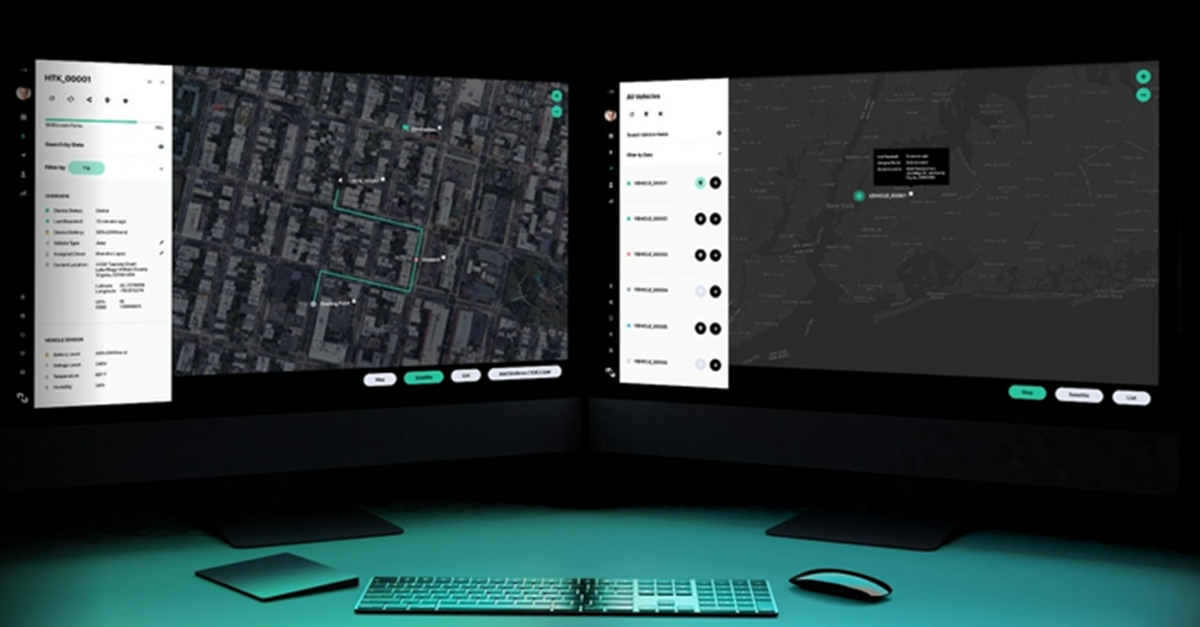In today’s fast-paced and highly competitive business world, managing high-value assets is more critical than ever. Whether you’re running a construction site, managing a fleet of luxury vehicles, or overseeing an extensive inventory of high-tech equipment, the loss, theft, or mismanagement of assets can be devastating to your bottom line. This guide explores how businesses can leverage GPS tracking to effectively manage their high-value assets and ensure maximum security, efficiency, and profitability.
The Growing Need for High-Value Asset Tracking
High-value assets are the lifeblood of many industries, but they come with significant risks. The equipment, tools, machinery, and inventory that keep a business running often represent a major financial investment. As asset costs continue to rise across industries, the potential for loss, whether due to theft, damage, or poor management, has never been more concerning.
According to recent data, it is estimated between $300 million to $1 billion in construction and farm equipment theft losses annually year in the U.S. This doesn’t account for the losses in industries like healthcare, manufacturing, and luxury goods, where valuable equipment can be either difficult to replace or costly to insure. As these losses add up, so does the pressure to find solutions that protect assets, streamline operations, and cut costs.
The need for robust tracking systems is clear2. With GPS tracking, businesses can gain real-time insights into the location and condition of their high-value assets, allowing them to take action quickly when something goes wrong. But the value of GPS tracking goes beyond just theft prevention. It’s about creating operational efficiencies, reducing downtime, and improving overall management.
Key Challenges in Managing High-Value Assets
Managing high-value assets can be complex and fraught with challenges. In addition to theft and loss, there are several other hurdles that businesses face in tracking expensive equipment and inventory. Let’s break down some of the major challenges that make asset tracking a priority.
The Complexity of Tracking Across Multiple Locations
For businesses with operations in multiple locations, whether that’s across different job sites, warehouses, or retail locations, tracking high-value assets becomes even more difficult. High-value equipment might be moving from one location to another frequently, which means losing track of its location is an ever-present risk.
If you’re managing machinery or inventory at a large construction site, for instance, assets can easily become misplaced or hard to locate without a real-time tracking system. Having visibility into where each piece of equipment is at all times isn’t just a convenience, it’s a necessity.
The Risk of Human Error
Even with the best of intentions, relying on manual tracking methods or outdated technology can lead to errors. Human error is an inevitable part of any operation, but when it comes to managing high-value assets, those errors can be costly. A misplaced piece of equipment, a forgotten check-in, or an incomplete asset audit could result in lost revenue, delayed projects, and unnecessary expenses.
GPS tracking removes much of this risk by automating data collection and providing accurate, up-to-the-minute information on the status and location of assets.

Security Concerns
When it comes to high-value assets, theft or unauthorized access is always a concern. In industries like construction, where heavy machinery is stored on remote job sites, or in retail, where luxury goods might be transported between locations, the possibility of assets being stolen or tampered with is very real.
Businesses must ensure that their assets are not only tracked but also protected from unauthorized access. GPS tracking systems can help by providing geofencing alerts, which trigger notifications if an asset is moved outside a designated area. This added layer of security can help businesses mitigate theft risks and ensure assets remain where they’re supposed to be.
Operational Inefficiency
High-value assets are often subject to inefficient use, especially when tracking systems aren’t in place. A piece of equipment could be underused, misplaced, or forgotten in a warehouse, leading to costly delays or additional purchases. In industries like construction, where timely access to equipment is critical, having assets unavailable can cause entire projects to stall.
With GPS tracking, businesses can optimize asset use by ensuring that equipment is always in the right place at the right time. GPS tracking enables businesses to track asset utilization and optimize the scheduling of maintenance and usage to prevent unnecessary downtime.
The Fundamentals of Asset Tracking: How GPS Tracking Works
So, how exactly does GPS tracking help businesses effectively track their high-value assets? Let’s take a closer look at the fundamentals of GPS-based asset tracking technology.
GPS tracking technology uses a network of satellites to pinpoint the location of an asset in real time. By installing a GPS tracking device on an asset, whether that’s equipment, machinery, or an inventory item, businesses can monitor its movements and receive notifications whenever the asset’s location changes.
The process is simple: GPS tracking devices communicate with satellites that send location data to a centralized system, which then updates the asset’s status on a map or dashboard in real time. These systems can be accessed remotely, which means businesses can track assets from anywhere, whether they’re in the office, in the field, or on the go.
Integration with Business Systems
The real power of GPS tracking lies in its ability to integrate seamlessly with other business systems. For example, an asset tracking system can be integrated with a company’s Enterprise Resource Planning (ERP) system, inventory management software, or maintenance scheduling tools.
This integration allows businesses to manage their assets more efficiently, automating workflows like maintenance scheduling or inventory reordering based on asset data. Businesses can also track asset condition, such as temperature, humidity, or movement, which is especially important for assets sensitive to environmental changes, like medical equipment or temperature-controlled inventory.
Proven Strategies for Tracking Expensive Equipment and Inventory
Now that we understand the basics of how GPS tracking works, let’s dive into some practical strategies for managing and tracking high-value assets effectively.
Step 1: Implement a Robust GPS Tracking System
The first step to managing high-value assets is selecting a GPS tracking system that fits your business needs. There are a wide variety of GPS devices on the market, ranging from simple trackers that offer basic location services to advanced solutions that monitor the condition of assets in real time. When choosing a GPS tracking system, consider the following:
- Durability: The device should be rugged enough to withstand the harsh conditions of your industry, whether it’s construction, healthcare, or retail.
- Real-time Tracking: Ensure that the system provides live updates on the location of your assets.
- Battery Life: For mobile or remote assets, long battery life is crucial to minimize maintenance.
- Scalability: Choose a system that can grow with your business, allowing you to add new assets or locations as needed.

Step 2: Integrate GPS Tracking with Operational Workflows
Once you’ve implemented your GPS tracking system, the next step is to integrate it into your operational workflows. GPS tracking isn’t just about knowing where your assets are, it’s about using that data to improve efficiency and reduce costs.
For example, GPS data can be used to ensure that equipment is dispatched in a timely manner and that the right assets are on hand for specific projects. You can use tracking data to monitor maintenance schedules, ensuring that assets are properly maintained before they break down, which can help you avoid costly repairs or replacement costs.
Step 3: Use Geofencing and Alerts for Real-Time Monitoring
One of the key features of GPS tracking systems is geofencing, which allows you to set virtual boundaries around an asset. If the asset crosses into or out of this predefined area, the system sends an immediate alert.
This feature is particularly useful for protecting high-value assets from theft. For instance, if an expensive piece of construction equipment is moved off-site without authorization, the system will immediately notify the designated personnel. Geofencing can also be used to track equipment as it moves between job sites, ensuring that it’s always where it needs to be.
Step 4: Regular Audits and Maintenance
Regular audits and maintenance are essential to keeping high-value assets in peak condition. GPS tracking systems provide valuable insights into asset usage, helping businesses identify which assets are being underused or overused. This allows companies to make more informed decisions about asset rotation, repairs, and replacements.
The Benefits of GPS Tracking for High-Value Assets
GPS tracking offers several tangible benefits that can help businesses reduce costs and improve their overall asset management strategy:
- Loss Prevention and Theft Reduction: By providing real-time location data and geofencing alerts, GPS tracking significantly reduces the chances of asset theft or loss.
- Improved Operational Efficiency: GPS tracking ensures that assets are available when needed, reducing downtime and boosting productivity.
- Cost Savings: Reduced theft, optimized asset usage, and proactive maintenance all contribute to substantial cost savings over time.
- Compliance and Accountability: GPS tracking provides detailed records of asset movements and conditions, helping businesses stay compliant with industry regulations and providing transparency in audits.
Secure, Optimize, and Grow Your Business with GPS Tracking
Managing high-value assets is no longer a task that can be left to chance. With the help of GPS tracking technology, businesses can secure their assets, optimize usage, and minimize risk. The ability to track assets in real-time and receive instant notifications when something goes wrong allows companies to take proactive measures and prevent costly mistakes.
If you’re ready to take control of your high-value assets, it’s time to consider implementing a GPS tracking solution that works for your business. By doing so, you can safeguard your investment, improve operational efficiency, and unlock new opportunities for growth.

